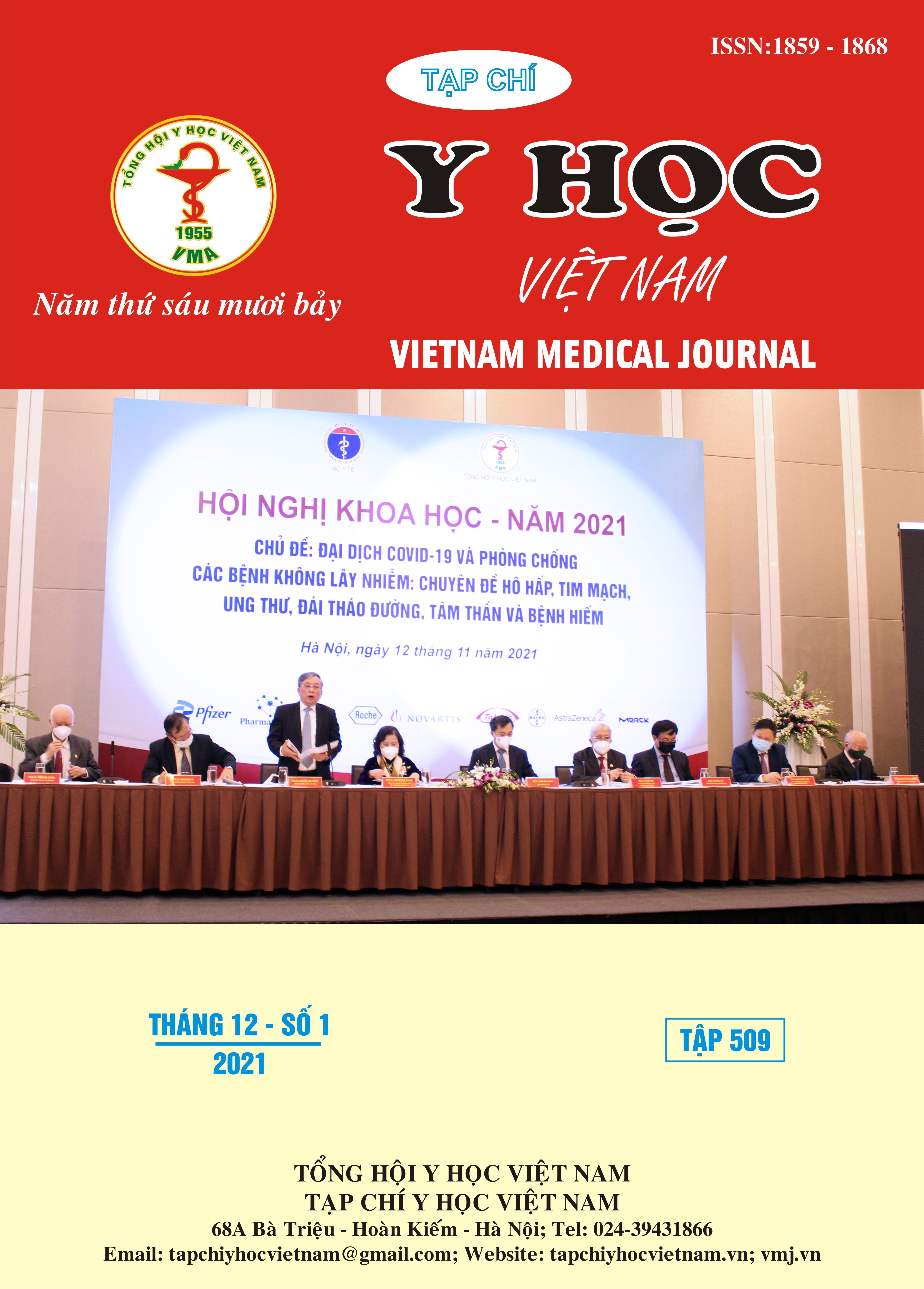KẾT QUẢ ĐIỀU TRỊ VIÊM PHỔI VÀ NHIỄM KHUẨN HUYẾT DO KLEBSIELLA PNEUMONIAE SỬ DỤNG AMIKACIN CÓ GIÁM SÁT NỒNG ĐỘ TRONG MÁU
Nội dung chính của bài viết
Tóm tắt
Mục tiêu: Đánh giá kết quả điều trị viêm phổi và nhiễm khuẩn huyết do Klebsiella.pneumoniae sử dụng amikacin có giám sát nồng độ trong máu và mô tả độc tính trên thận. Đối tượng và phương pháp nghiên cứu: Nghiên cứu lâm sàng can thiệp trên bệnh nhân nhiễm khuẩn huyết hoặc viêm phổi do K.pneumoniae tại khoa Hồi sức tích cực. Liều amikacin là 30 mg/kg cân nặng hiệu chỉnh (ABW). Mục tiêu giám sát nồng độ thuốc trong máu (TDM) là Cpeak : 45 – 60 mg/L, Cpeak/MIC: 8-10, Ctrough< 2mg/L. Chúng tôi ghi nhận đáp ứng lâm sàng và sự phát triển tổn thương thận cấp. Kết quả: 42 bệnh nhân được nhận vào nghiên cứu, có tuổi trung bình 56,1 ± 19. Nam giới chiếm 76,2%. Điểm APACHE II 16, điểm SOFA ngày vào khoa 8[4,5], điểm Chalson 1[2]. Tỉ lệ sốc nhiễm khuẩn tại thời điểm dùng amikacin 35,7%. Bệnh nhân thở máy chiếm 85,7%. Viêm phổi chiếm 83,3%. MIC của K.pneumoniae với amikacin 4[2-5], tỉ lệ MIC≤8 là 92,9%. Tỉ lệ bệnh nhân đáp ứng lâm sàng hoàn toàn là 57,1%. Tỉ lệ đáp ứng lâm sàng hoàn toàn ngày thứ 5 tăng hơn ngày thứ 3, ngày thứ 7 tăng hơn ngày thứ 5 (p<0,05). Nhóm đáp ứng lâm sàng hoàn toàn và nhóm không đáp ứng lâm sàng hoàn toàn có sự khác biệt về điểm APACHE II, điểm SOFA ngày vào khoa, điểm SOFA lúc bắt đầu điều trị, Hct lúc bắt đầu điều trị và tỉ lệ thở máy (p<0,05), không có sự khác biệt về Cpeak/MIC và MIC (p>0,05). Trong những bệnh nhân Ctrough<2mg/L tỉ lệ xuất hiện tổn thương thận là 38,1% và 87,5% ở giai đoạn nguy cơ. Thời gian xuất hiện tổn thương thận là 6,1±3,6 ngày. Kết luận: Tỉ lệ đáp ứng lâm sàng hoàn toàn khi điều trị viêm phổi, nhiễm khuẩn huyết do K.pneumoniae sử dụng amikacin liều 30 mg/kg ABW là 57,1%. Bệnh nhân có điểm APACHE II cao, SOFA lúc vào khoa cao, SOFA lúc bắt đầu điều trị cao và bệnh nhân thở máy có đáp ứng lâm sàng kém hơn. Tỉ lệ tổn thương thận cấp ở các bệnh nhân nghiên cứu là 38,1%.
Chi tiết bài viết
Từ khóa
Klebsiella pneumoniae, amikacin, giám sát nồng độ thuốc
Tài liệu tham khảo
2. Trần Nhật Minh Phân tích đặc điểm lâm sàng, vi sinh và phác đồ điều trị nhiễm khuẩn do Klebsiella pneumoniae tại khoa Hồi sức tích cực Bệnh viện Bạch Mai, Luận văn tốt nghiệp Dược sĩ, trường Đại học Dược Hà Nội, Hà Nội, 2019.
3. Kontopidou F., Giamarellou H., et al., "Infections caused by carbapenem resistant Klebsiella pneumoniae among patients in intensive care units in Greece: a multi-centre study on clinical outcome and therapeutic options", Clinical Microbiology and Infection, 20(2), 2014 pp. O117-O123.
4. Oliveira JF, Silva CA, Barbieri CD, Oliveira GM, Zanetta DM, Burdmann EA: Prevalence and risk factors for aminoglycoside nephrotoxicity in intensive care units. Antimicrob Agents Chemother 2009, 53:2887-2891.
5. Vardakas K. Z., Matthaiou D. K., et al, "Characteristics, risk factors and outcomes of carbapenem-resistant Klebsiella pneumoniae infections in the intensive care unit", J Infect, 70(6), 2015 pp. 592-9


